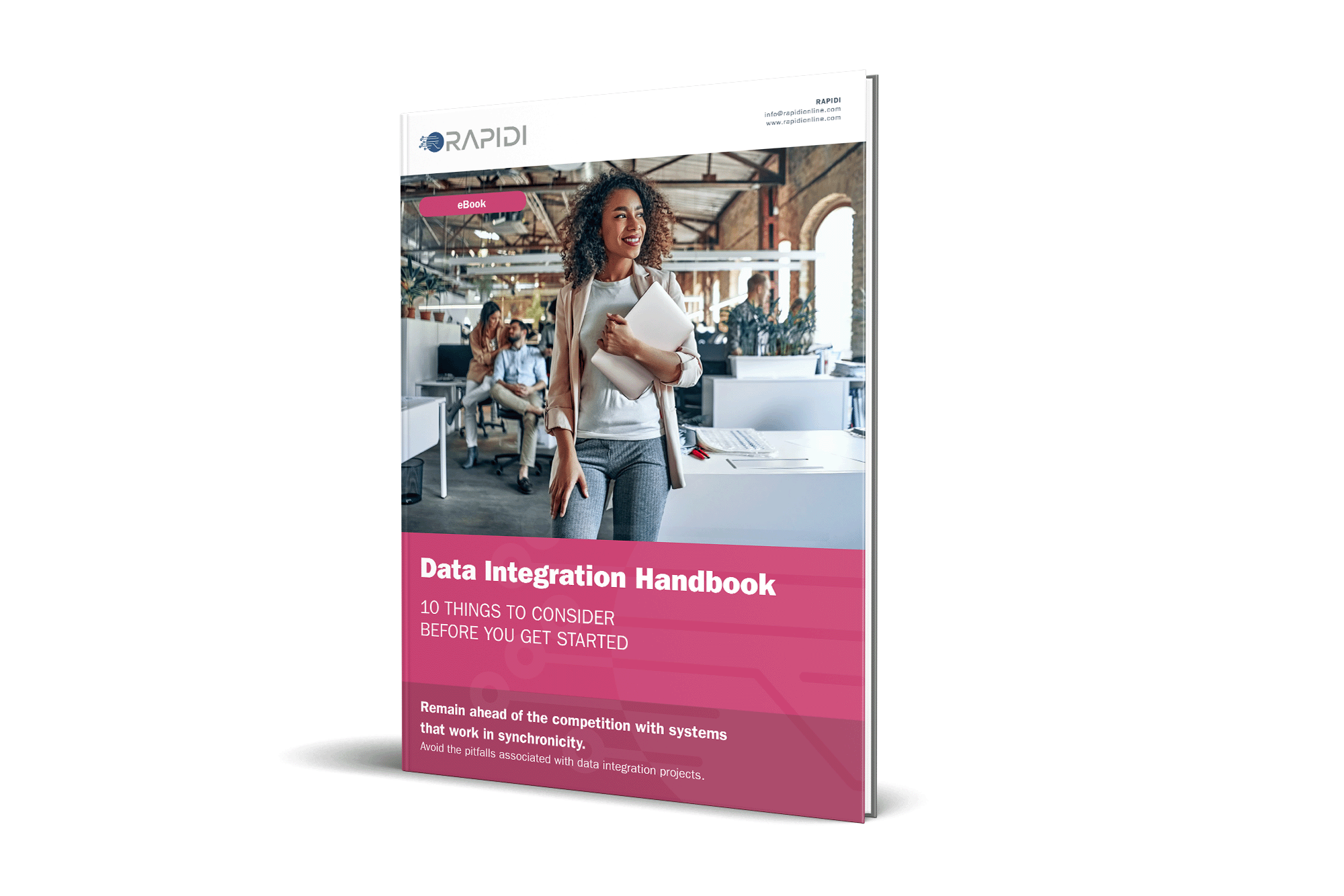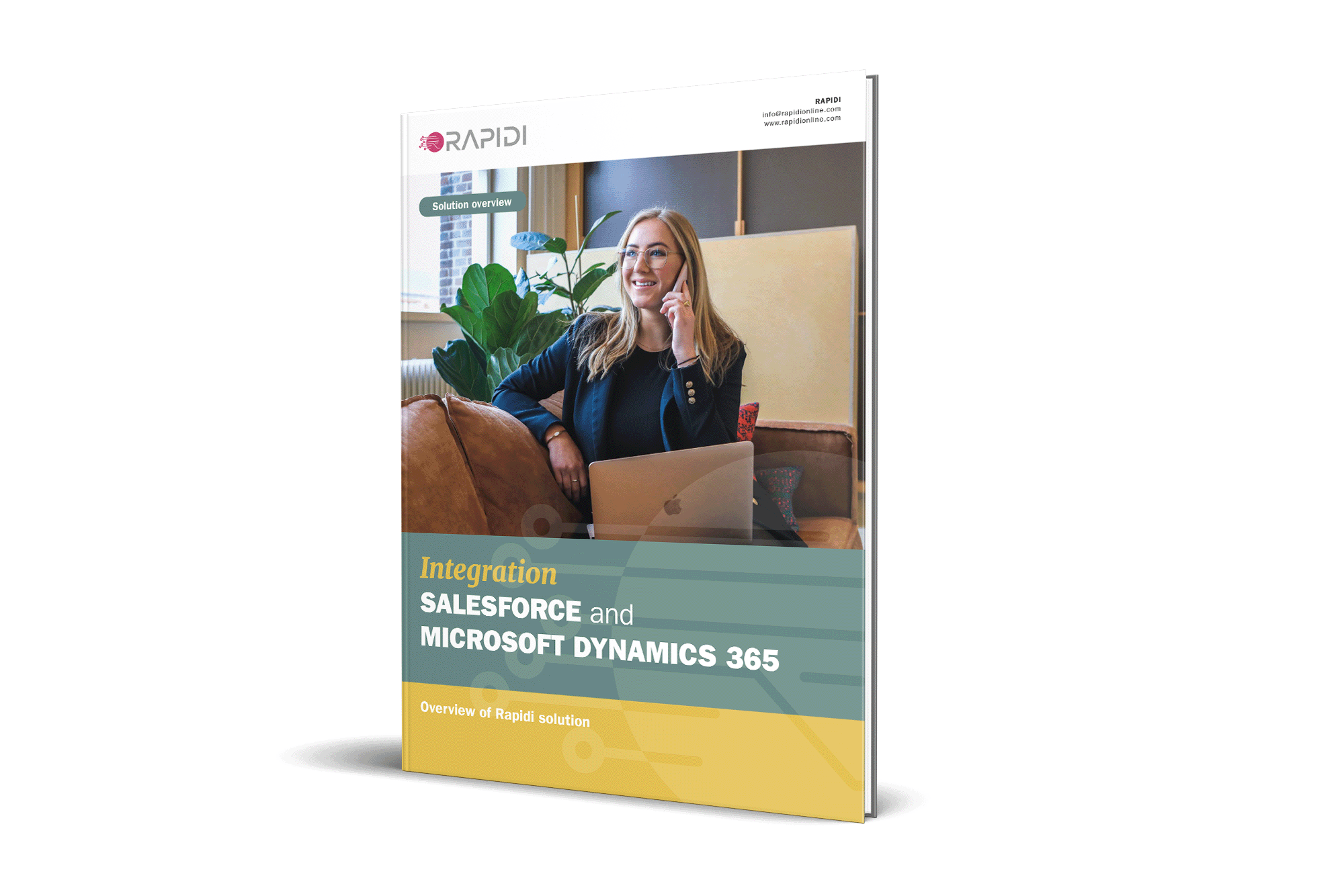Integrate Salesforce and Microsoft Dynamics 365 Finance seamlessly
Integrating Salesforce with Microsoft Dynamics 365 Finance allows businesses to streamline their financial operations, improve data accuracy, and enhance overall efficiency. At Rapidi, we provide seamless integration solutions that connect these powerful platforms, ensuring that your sales and financial information is always up-to-date, consistent and readily available.
Benefits of Integrating Salesforce with Dynamics 365 Finance
- Streamlined Financial Operations: Automate data synchronisation between Salesforce and Dynamics 365 Finance to reduce manual data entry and errors.
- Improved Data Accuracy: Ensure consistent and accurate financial data across your organisation
- Enhanced Efficiency: Save time and resources by automating routine financial processes.
What Our Customers Say
A lot of other systems we looked at required a lot more custom planning in order to get the data synced properly. Anything that we can get off-the-shelf, that runs and that needs as little attention of our time, is really ideal. We really need to have robust systems that integrate directly and that don't need a lot of care and maintenance on our end and can run autonomously.
Eric Clay, Information Technology Director, The Ken Blanchard Companies
How Our Integration Works
- Step 1: Setup: Connect your Salesforce and Microsoft Dynamics 365 Finance accounts.
- Step 2: Configuration: Customise the integration settings to fit your business needs.
- Step 3: Synchronisation: Automatically sync financial data between platforms in real-time.
Get Started Today With your Dynamics Finance Integration
Ready to streamline your financial operations with our Salesforce and Microsoft Dynamics 365 Finance integration?
Want to learn more about how to integrate Dynamics 365 Finance with Salesforce, then download our fact-sheet and get all the details.
If you prefer a personalized demo schedule a free discovery call with our expert team.
Contact us today to schedule a demo and see how our solution can benefit your business.
Frequently Asked Questions
1. Why integrate Microsoft D365 Finance with Salesforce?
Integrating D365 Finance with Salesforce helps companies unify their customer, financial, and operational data. It streamlines order processing, improves sales-to-cash processes, and eliminates redundant data entry between systems.
2. What are the common integration scenarios between the two systems?
Common integration scenarios revolve around synchronizing data entities such as Accounts/Customers, Products, Orders, Invoices, and Payment information.
3. Are there any out-of-the-box connectors for D365 Finance and Salesforce?
There is no official “Microsoft-built” out-of-the-box connector specifically for D365 Finance and Salesforce. However, RAPIDI offers out-of-the-box connectors or templates that can accelerate the integration and can be instantly used for this type of integration.
4. Are all out-of-the-box and custom D365 Finance entity types automatically supported for integration with Salesforce, or do we need additional development or configuration to include certain entity types?
All D365 Finance entities are supported when integrating D365 Finance and Salesforce via Rapidi. The only prerequisite is to have access to the entities that will be used for the integration setup. Therefore, there is no need for further development or configurations on your end.
5. How will the integration improve financial visibility and reporting accuracy?
The integration provides real-time or near-real-time data synchronization, giving finance teams up-to-date views of orders, payments, and revenue. This reduces manual reconciliation and errors, resulting in more reliable financial reports and faster closing cycles. Rapidi offers free objects that can be installed in your Salesforce org that provides you with a financial overview based on your data coming from your ERP. In that way you have a 360 degree of your accounts inside your CRM.
6. What are the maintenance and upgrade implications?
Mature integration solutions are designed to adapt to updates in Salesforce or the ERP system, often requiring minimal adjustments. Vendors typically provide continuous support and compatibility updates to ensure smooth operation after system upgrades.









